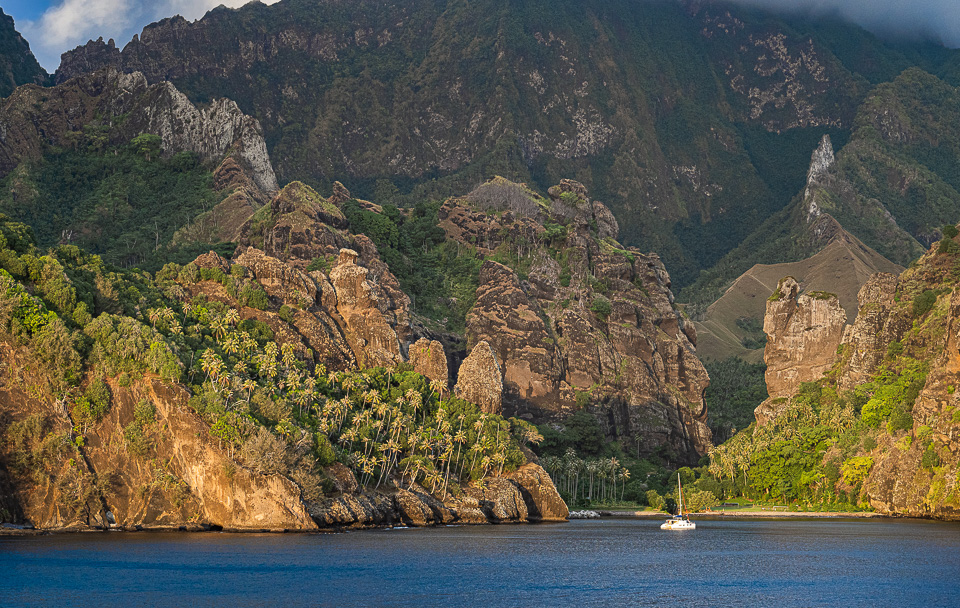
The islands we had dreamed of for so long rose from the sea like the morning sun. Steep, rugged, and menacing, the mountain masses hurled themselves ever higher as we sailed on until they were soaring like rock fortresses high above the ocean. Tumbling, frothing, and rumbling like a distant thunderstorm, the endless sea beat wildly against these fixed obstacles in a world of living water…. then the palm-lined beaches also rose, and we coasted alongside a lofty island, smaller but more spectacularly beautiful even than Tahiti… We felt small in this tremendous landscape, yet we were drawn to it as if by a spell.
— Thor Heyerdahl, 1937
Prologue
So wrote Norwegian explorer Thor Heyerdahl in his book, Fatu Hiva, about his approach to the Marquesas Islands, some 1,000 miles north of Tahiti and one of the most remote places on earth. He had left Norway for French Polynesia Christmas Day 1937 with Liv, his bride, soon after he graduated from the University of Oslo. It was the kind of adventure that many young people merely dream about.
After years of research, the couple decided to settle on the island of Fatu Hiva in the Marquesas, where they stayed for a year. They didn’t know anyone before they landed and took minimal supplies from home. Once there, they lived off the land and sea and constructed a bungalow-style dwelling through their ingenuity.
It was during this period that Heyerdahl began to develop his theory that the original Polynesians migrated from South America, not Asia, as was commonly assumed. Ten years later, he launched his now famous Kon-Tiki expedition to prove that South American tribes could have reached Polynesia on rafts made of balsa wood. The rest is history—all well documented in Heyerdahl’s books and films. Today, there’s a museum in Oslo dedicated to his exploits.
Heyerdahl’s books, which I read as a teenager, stirred my own wanderlust. I dreamed of sailing to the South Seas but was too young to find an opportunity. Meanwhile, I fretted that the islands would be spoiled by the time I could visit them. Finally, over 40 years later my childhood dreams came true when my wife and I journeyed to French Polynesia in 2013 and 2022. To our relief, the charms of Polynesia have endured.
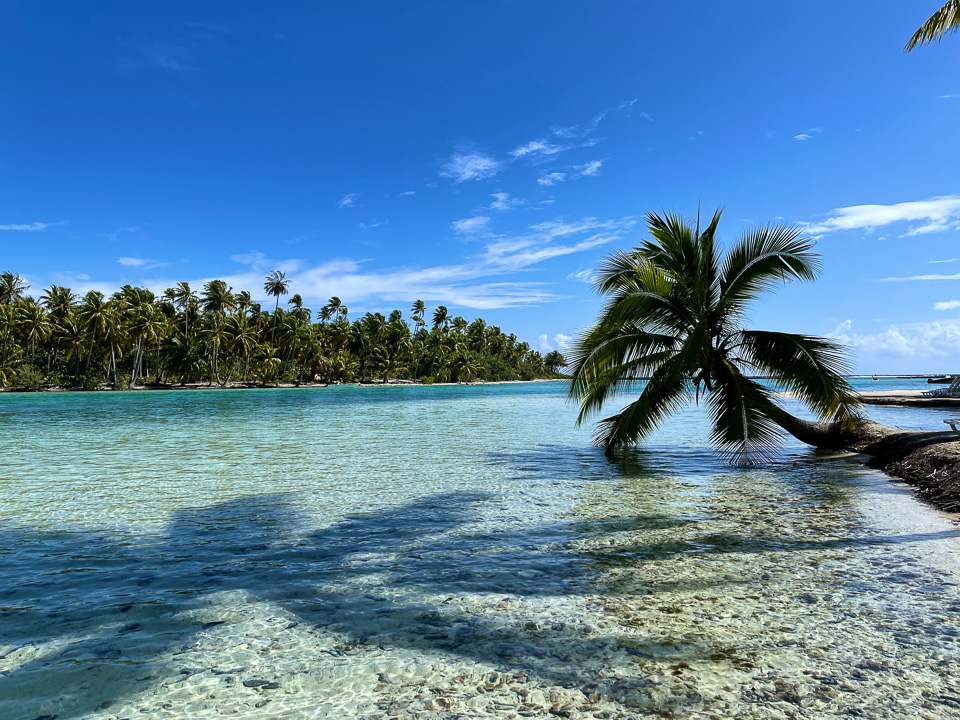
On our first trip to Polynesia, we visited the better-known and more accessible Society Islands (Tahiti, Bora Bora, Moorea). When we returned in 2022, we cruised north to the remote Marquesas Islands group (Fatu Hiva, Nuku Hiva, Tahuata, and Hiva Oa) by way of Fakarava Island in the Tuamotu Archipelago, another of the five island groups that comprise French Polynesia. (The other groups are the Gambier and Austral Islands). On both trips, we traveled on the Paul Gauguin, a small, superbly appointed ship, owned by the French company Ponant, that immerses its guests in Polynesian culture.
French Polynesia is enormous. Its 118 islands, altogether about the size of Rhode Island, are scattered over some 1.5 million square miles of ocean approximately the size of Europe or half that of China. As Harvard scholar, Christina Thompson, has written in her book, Sea People, The Puzzle of Polynesia, “When you truly grasp how very little land there is and how much water, it’s surprising that any European explorer ever found anything at all… There’s a reason the remote Pacific was the last place on earth to be settled by humans. It was the most difficult, more daunting even than the deserts or the ice. And yet, somehow, Polynesians managed not just to find but to colonize every habitable island in this vast sea.”
Getting to the Marquesas isn’t easy. Coming from the U.S., you must take an 8-hour flight from Los Angelos to Tahiti, then a 2-day cruise north. The other option is take a 4-hour flight from Tahiti to Nuku Hiva, the largest island in the group, followed by a bumpy, 90-minute ride in a 4-wheel drive vehicle to the main town of Taiohae.
Although we looked forward to returning to the Society Islands on our second trip, it was the infrequently visited Marquesas, remote even by Polynesian standards, that beckoned us to return. Here are no four and five-star resorts with over-the-water bungalows found on better-known islands such as Tahiti, Bora Bora and Moorea. But the Marquesas, with their towering, serrated volcanic peaks that loom over black sand beaches, lush valleys, and serpentine rivers, have some of the most dramatic scenery in Polynesia. These islands are also known for their skilled artisans who produce some of Polynesia’s most beautiful art: carvings in wood, stone and bone; paintings on cloth made from tree bark; elaborate body tattoos; and jewelry assembled with shells, dried berries and even sea urchin spines. Additionally, their joyful folk singing and sensuous dancing entertain all who make a visit.
Famous Western artists and writers who preceded us inspired our fascination with the Marquesas. Besides Thor Heyerdahl, these include French painter Paul Gauguin (1848-1903) and novelists Herman Melville (1819-1891) and Robert Louis Stevenson (1850-1894). French crooner Jacques Brel (1929-1978) also settled in the Marquesas and was buried on the island of Hiva Oa in the same cemetery as Paul Gauguin.
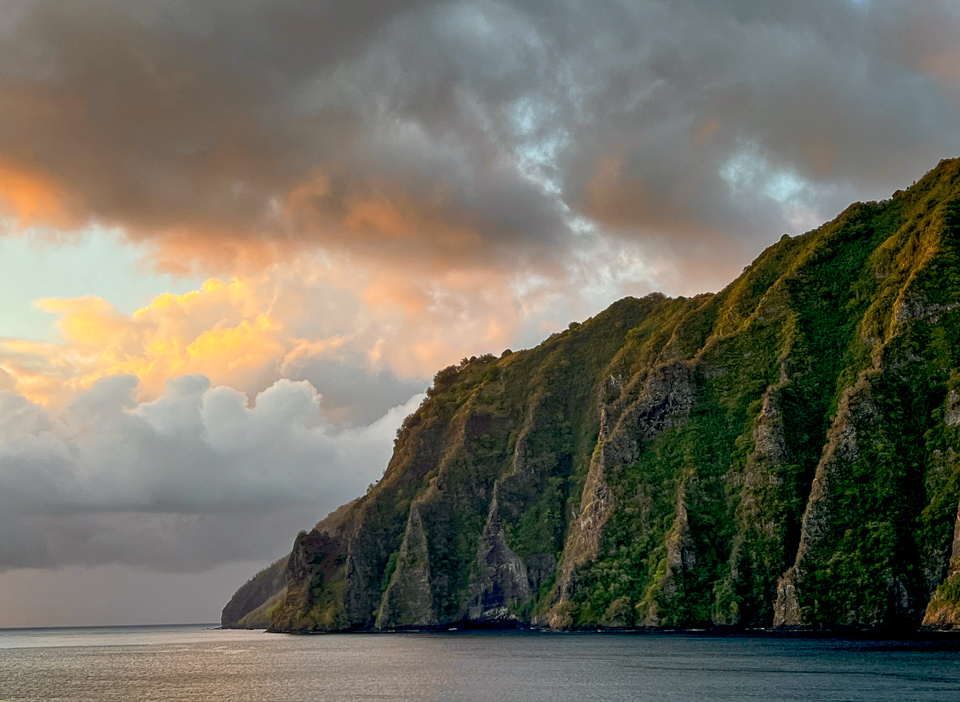
In the Marquesas
As the ship approached our first Marquesan island, we paced the ship’s deck with eyes trained on the horizon. The island first appeared as a ghostly apparition. As early morning sunlight burned off the veil of sea mists, Fatu Hiva’s sheer cliffs, blanketed in emerald shades of tropical foliage, came into view. Waves thundered against the rock walls, flinging spray helter-skelter. Our longstanding dream of reaching Fatu Hiva had finally become reality!
After anchoring in the Bay of Omoa on the southern end of the island, we took a small boat ashore for a guided four-wheel drive up the island’s spectacularly rugged western coast to Hanavave Bay, also known as the Bay of Virgins (a translation of the French name, Baie des Vierges)— one of the most beautiful landfalls in Polynesia. Its original name, Bay of Penises (Baie des Penes) was inspired by the phallus-shaped basalt spires that rise on either side of the narrow waterway. Not surprisingly, when missionaries arrived in the latter half of the 18th century, they disapproved of the name and changed it.

The bay’s dramatic spires border angular rock faces and thick groves of palm trees. With the entire setting overlooked by mountains, the view surpassed our already elevated expectations. The scenic 10-mile drive north from the village of Omoa proved just as dramatic: razor-edge mountains rise abruptly above jungle valleys to the east and towering cliffs cascade to the Pacific Ocean to the west.
Later, in Omoa’s small market, we shopped for crafts: hand-painted pareos (Polynesian sarongs), tapas (decorative cloth made from beaten and painted mulberry, breadfruit, or banyan tree bark) and hand-carved tikis made of tou (Oceanic walnut) or miro (rosewood). Tikis are considered the embodiments of powerful gods and ancestral spirits. Polynesians typically keep small tiki statues in their homes to bring protection and good fortune.
Other carved wood products included bowls, canoe paddles, swordfish rostrums, walking sticks, and traditional war clubs.
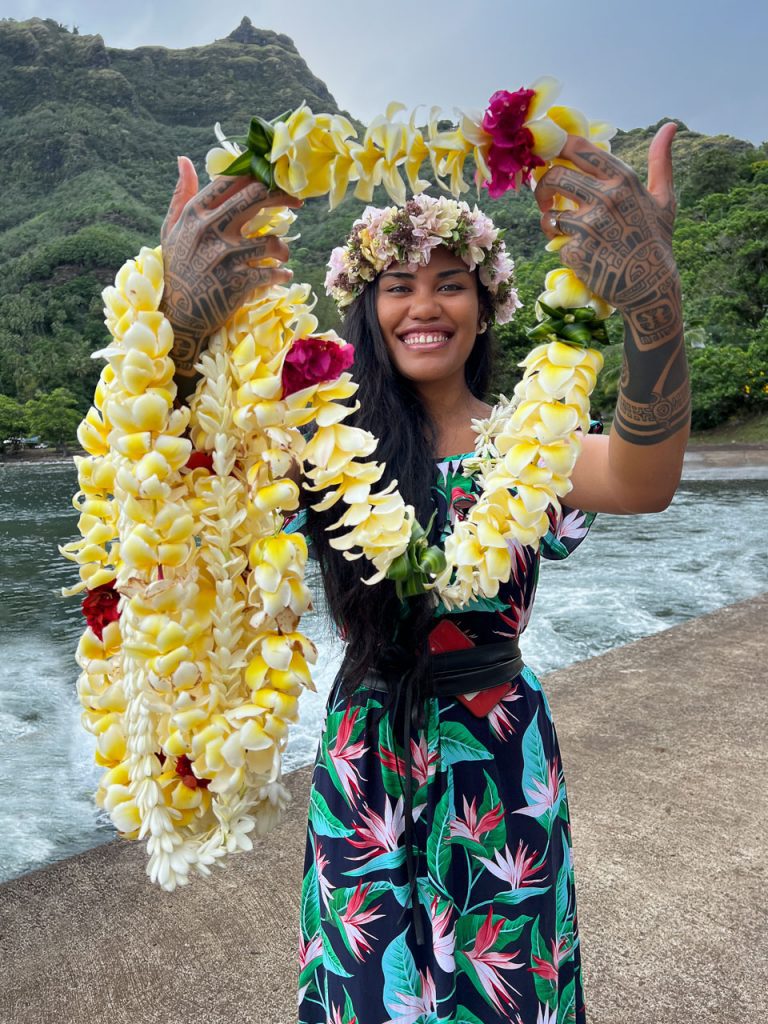
On each island, a local music troupe singing Polynesian folk songs and accompanied by a variety of instruments (drums, guitars, ukuleles and more) as well as women with garlands welcomed us as we went ashore.
All the destinations have unique appeal. Hiva Oa’s dense jungles, for example, shelter archaeological sites with old ceremonial platforms and enormous stone tikis. Near the main village of Atuona are the graves of 19th-century French painter Paul Gauguin and 20th-century crooner Jacques Brel.
On the smaller island of Tahuata, not far south of Hiva Oa, we found sophisticated Marquesan jewelry made from creatively arranged seeds, sea urchin spines, bone, stone, and wood. Later, in the village of Hapatoni, locals regaled us with joyful singing and dancing.
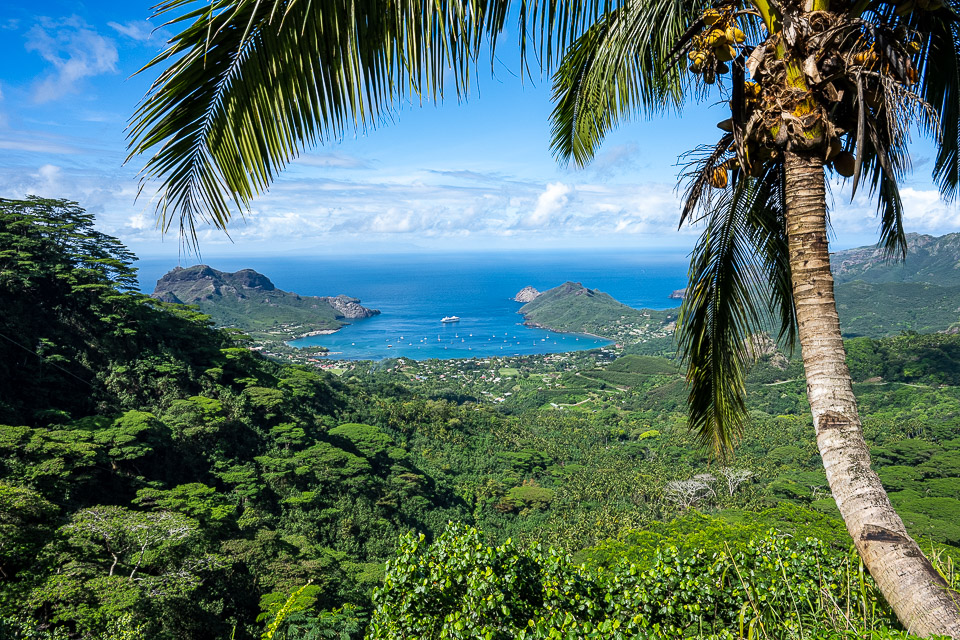
Nuku Hiva, the northernmost island, was our last destination in the Marquesas. After the ship anchored in the Bay of Taiohae, we went ashore for a 4-wheel drive excursion. The island has a mystical, otherworldly ambience. Here, locals say you can feel the mana, the spiritual life force of Polynesian culture. The island has only the basic requirements for its small community: a post office, hospital, town hall, bank, several grocery stores and a pharmacy. A beautiful Catholic church brings together symbols of the indigenous culture (tikis) with those of traditional Christianity (St. Peter, Christ on the Cross).
En route for a morning visit to the island’s Taipivai Valley, we enjoyed magnificent vistas of coastline, bays and mountains. Once in the valley, we passed jungles, agricultural villages, pine forests, coconut palm and breadfruit tree groves and fields of vegetables and fruits. The valley was made famous by American author Herman Melville (1819-1891) who lived here for a short period after deserting his whaling ship, the Acushnet, in July, 1842. His first novel, Typee, was based on his experiences. He wrote of “naked maidens, cannibal banquets, groves of coconut, coral reefs, tattooed chiefs, sunny valleys planted with breadfruit trees and carved canoes dancing on flashing blue waters…”

Robert Louis Stevenson, best known for his novel Treasure Island, also spent time on Nuku Hiva, trying to improve his fragile health in the warm climate. His book, In the South Seas, covers his 1889 sojourn. He wrote, “No part of the world exerts such attractive power…the land heaved up in peaks and rising vales; it fell in cliffs and buttresses; its colors ran through fifty modulations in a scale of pearl and rose and olive; and it was all crowned above with opalescent clouds.” Enraptured with Nuku Hiva, he concluded, “The first experience can never be repeated. The first love, the first sunrise, the first South Sea Island are memories apart and touched a virginity of sense.”
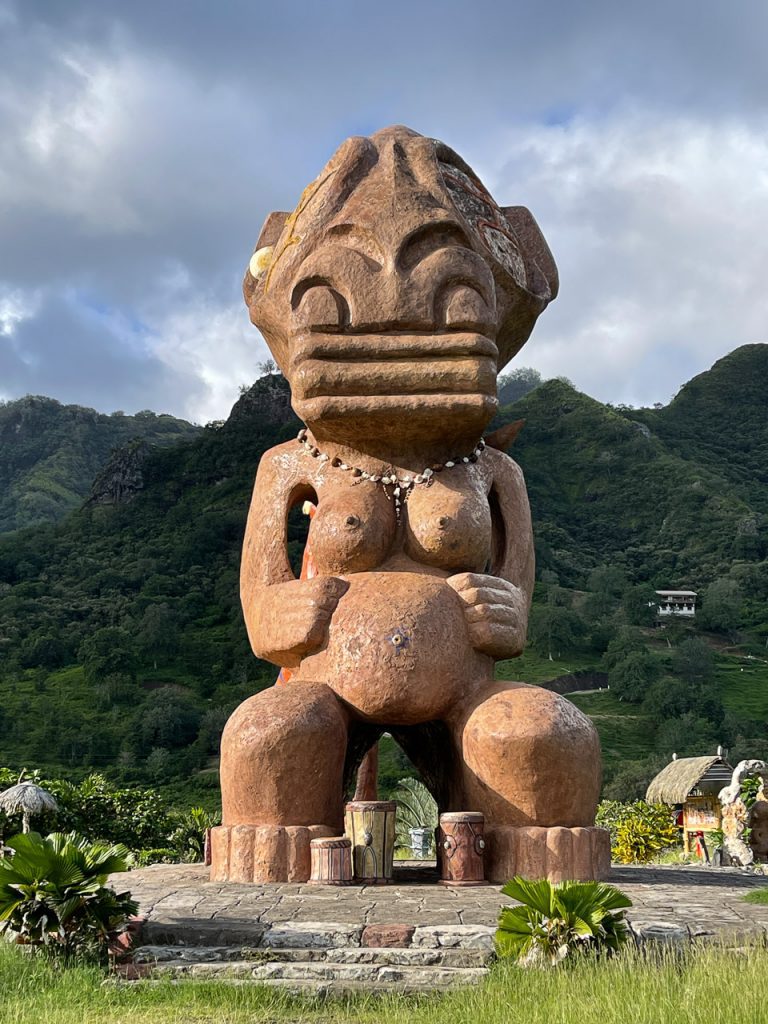
In the afternoon, we shopped for crafts in Nuku Hiva’s artisan market and couldn’t resist purchasing a beautiful tiki chief carved of tou wood. Later, a climb up the hill overlooking Taiohae Bay took us to the colossal, 12-meter-tall Tiki Tuhiva, the world’s largest tiki. Made of iron, concrete and keefu (volcanic rock), it overlooks spectacular panoramas of the coastline.
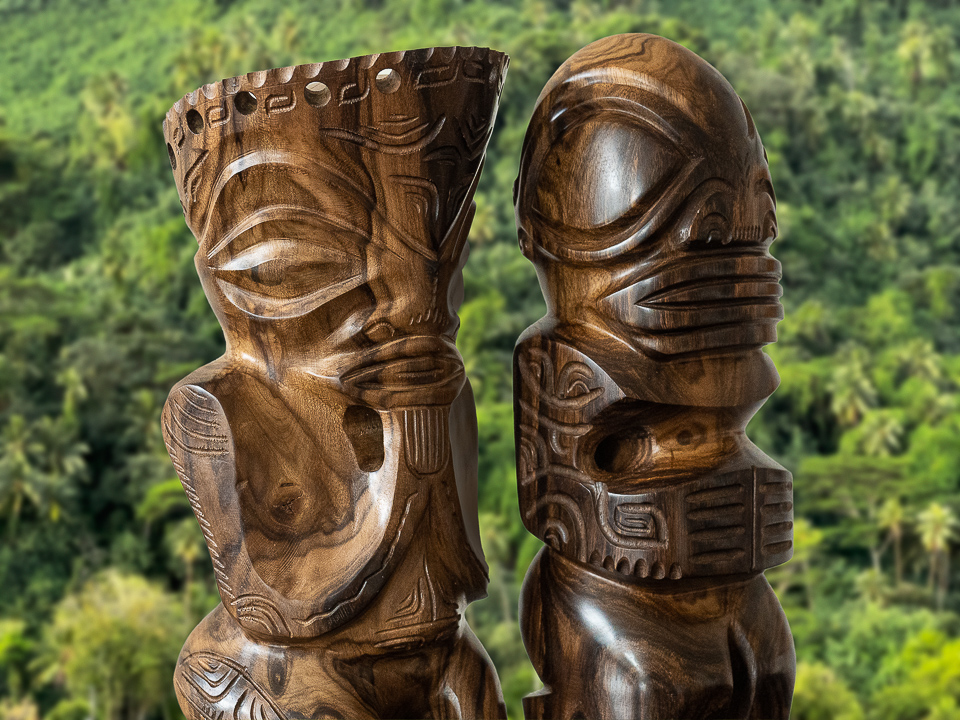
Epilogue
During our two-week trip, the Paul Gauguin offered enough excursions and outdoor recreation to suit just about anyone’s interests. Lovely lagoons with white and black sand beaches provided opportunities to swim, snorkel and scuba dive. Beneath the waters were plentiful marine life: stunning corals, hosts of iridescent fish, manta rays, reef sharks, turtles and more. Hiking, bicycling, paddle boarding and kayaking were always possibilities. Several guests even arranged a private fishing trip. One of them returned with enough tuna to feed his companions and a few members of the ship’s crew!
Apart from outdoor activities, the Paul Gauguin offered plenty of diversions, ranging from a performance by a renowned Polynesian dance group, O Tahiti E, to a sunset cruise around Bora Bora in an outrigger canoe. Our ukulele-playing boatman served champagne and sang Polynesian folk songs as a full moon rose over the island.
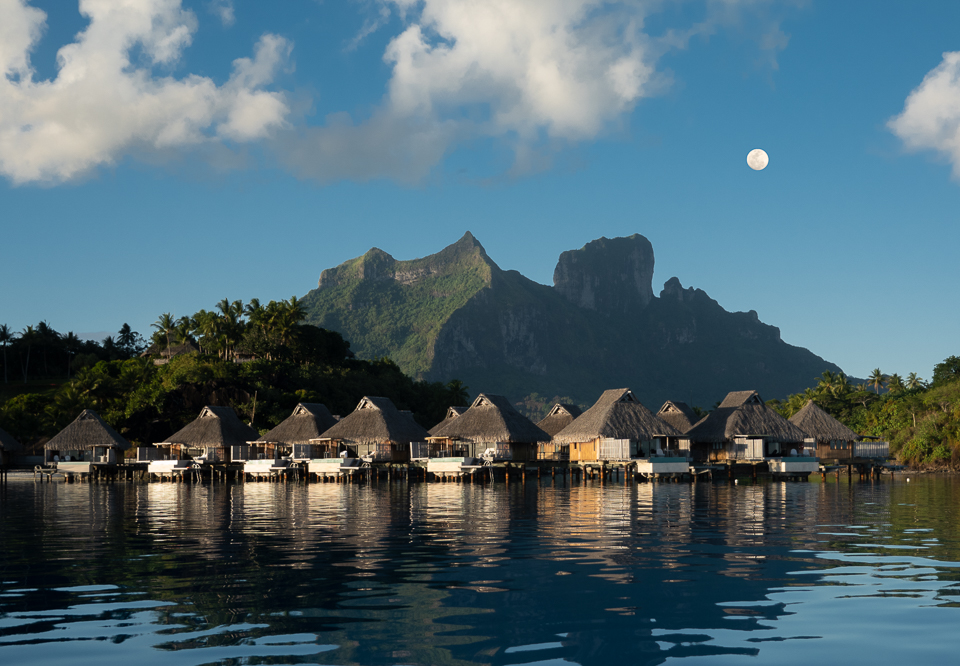
Interspersed among everything were shipboard lectures on Polynesian culture and demonstrations of the islands’ traditional arts—music, dancing, making leis with flowers and more. Guests could also shop for pearls, crafts, and Polynesian clothing in the ship’s boutique or relax in the shipboard spa with a Tahitian Wave Massage and body scrub.
The ship’s mostly Filipino crew was extremely gracious and efficient. Within a short time, they were communicating with us and others on a first-name basis and anticipating our preferences in the dining areas and elsewhere.
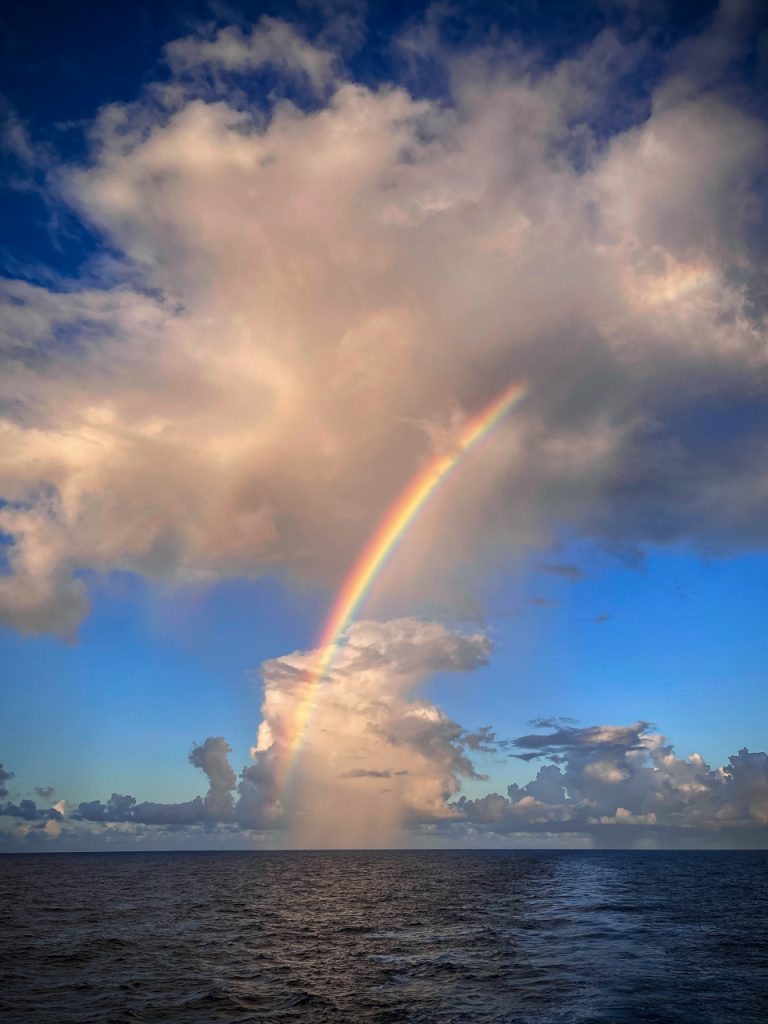
Typically, we rose at dawn (6:00-6:30 AM) for “early bird” coffee, fruits and pastries in La Palette, a small lounge that opened onto an outdoor terrace—our favorite place to watch the sunrise. Two attendants welcomed us with choices of fresh-squeezed orange or grapefruit juice. Breakfast al fresco followed on the deck below at La Veranda. The maître d’ promptly greeted us. “Good morning, Charles and Mary! Your table is ready outside. Would you like your usual fruit and omelette?” Once settled, we enjoyed a gentle sea breeze as exotic scenery passed by. Heaven on earth!
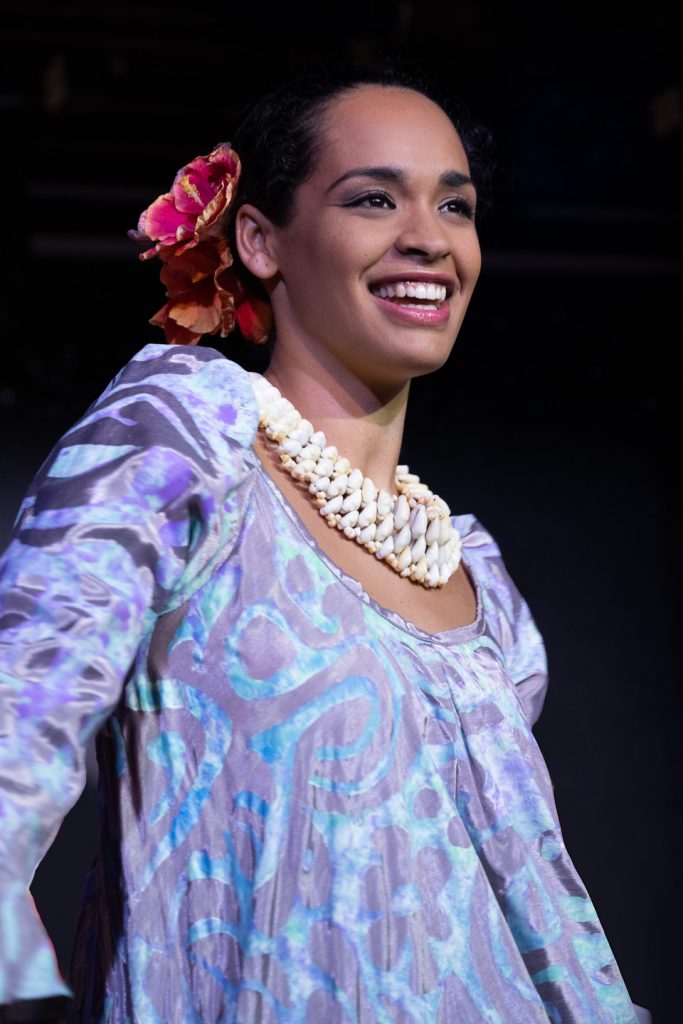
Best of all were the Gauguins and Gauguines—attractive, traditionally dressed Polynesian men and women who entertained guests around the clock. They performed music and dances in the evening and demonstrated Polynesian crafts, music making, and dancing by day. They added a personal, fun touch to the cruise.
If you seek a respite from the stresses at home and a unique opportunity to get off the beaten track, it’s hard to beat a cruise on the Paul Gauguin.
As renowned British explorer, Sir Ernest Shackleton reminded us a century ago:
It’s in our nature to explore,
To reach out into the unknown.
The only true failure would be not to explore at all.
Recommended Books:
Robert Louis Stevenson- In the South Seas (1896)
Herman Melville-Typee (1846)
Thor Heyerdahl-Fatu Hiva (1974)
Heidy Baumgartner- The Marquesas Islands (1998)
Christina Thompson, Sea People, The Puzzle of Polynesia (2019)
